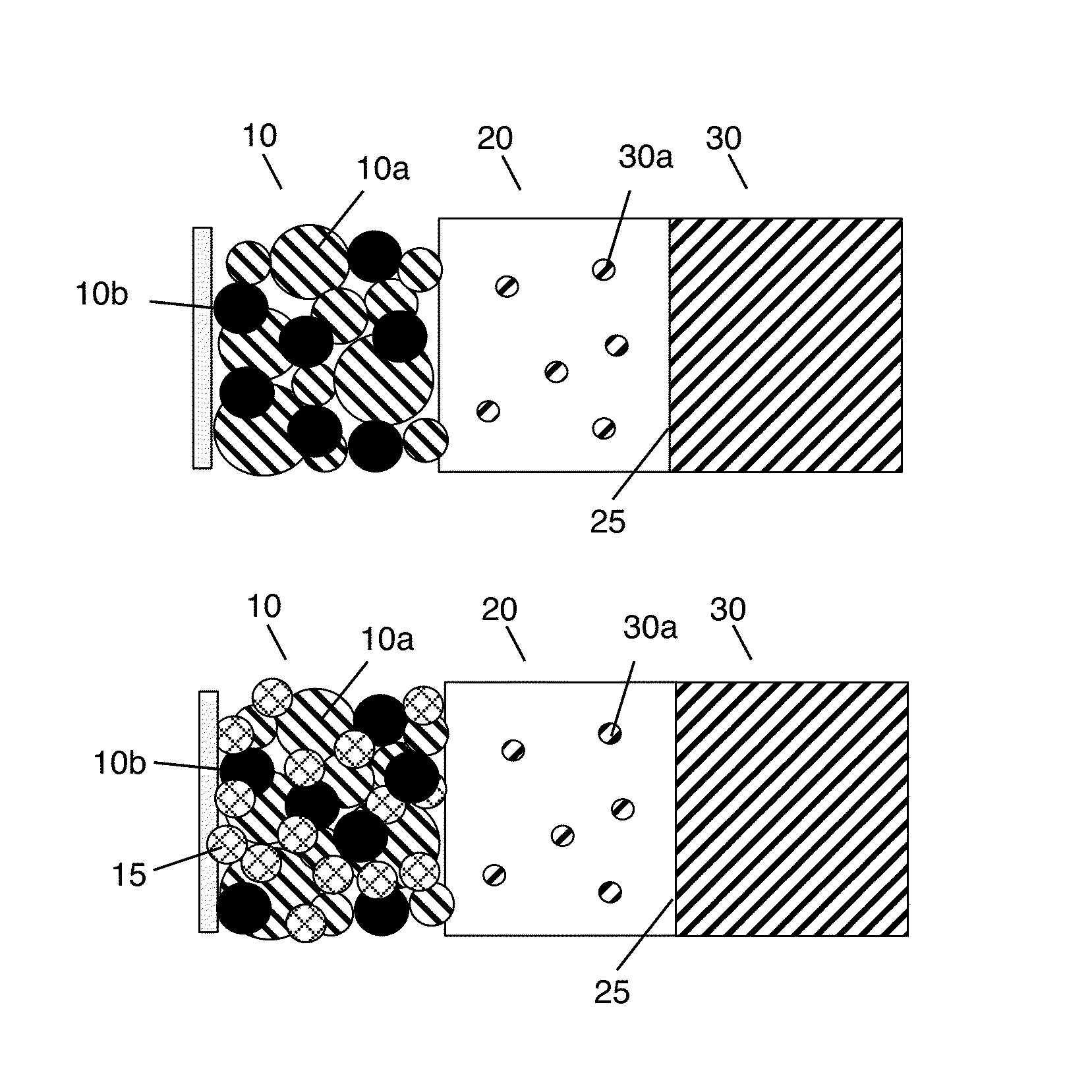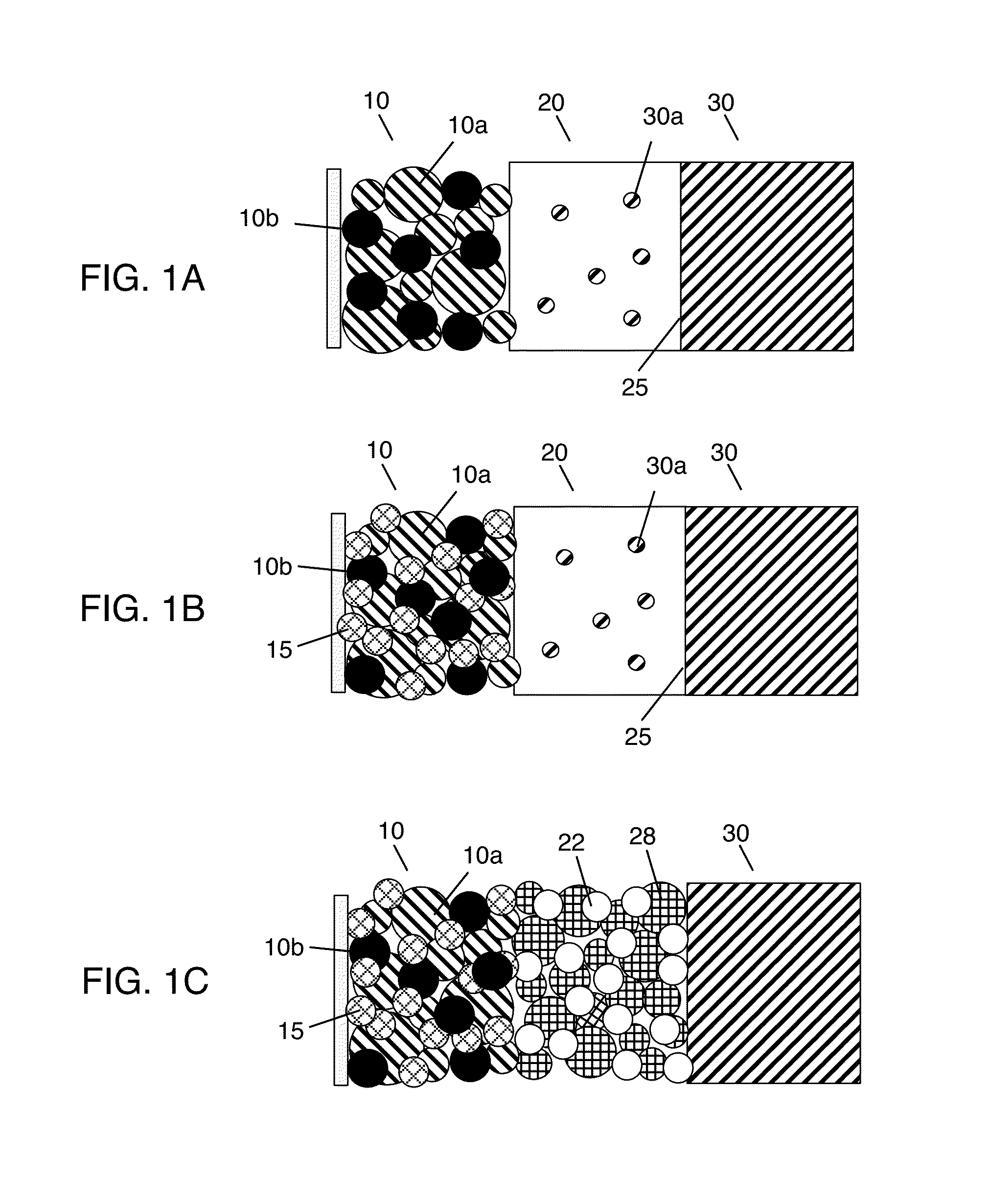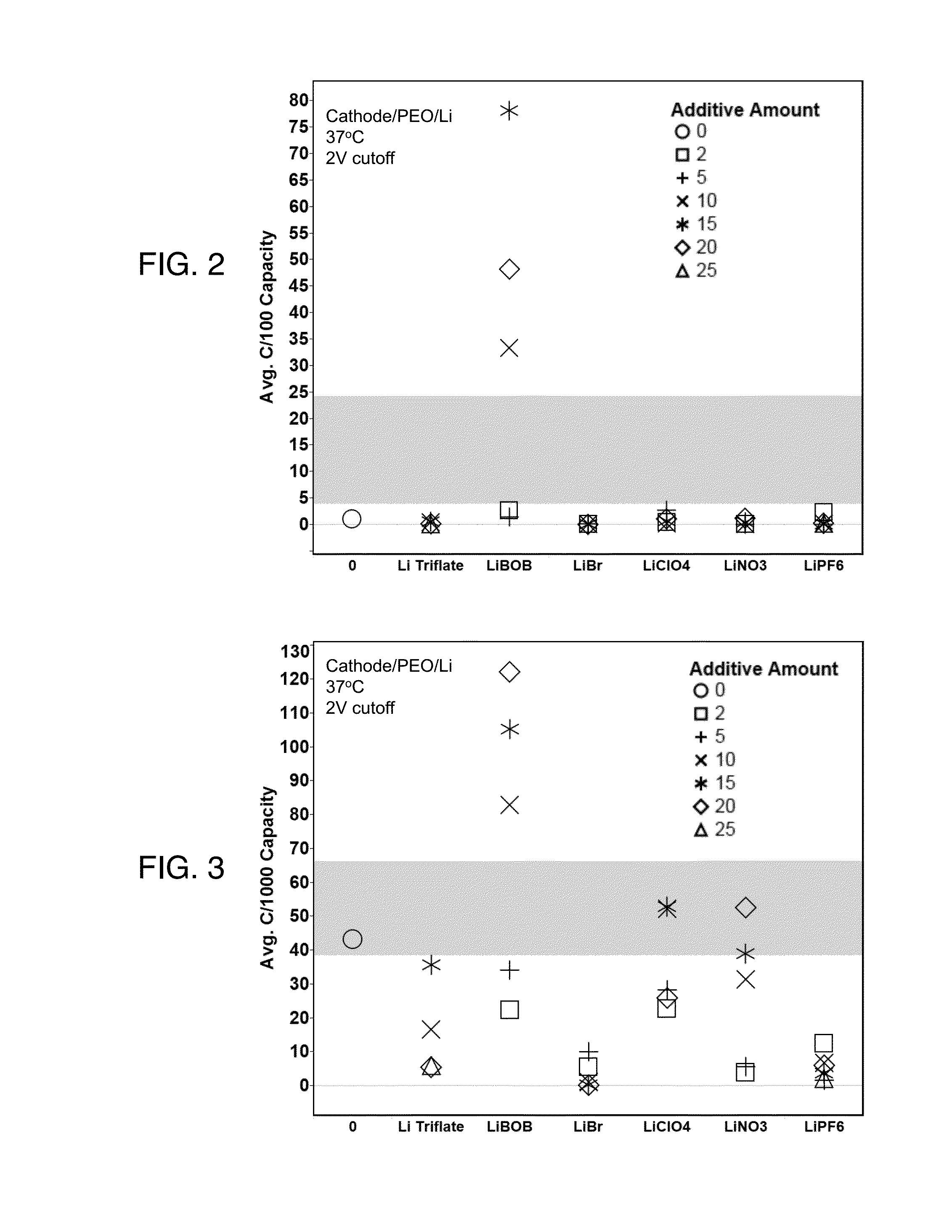Solid state electrolyte and electrode compositions
a solid-state battery and electrode technology, applied in the field of solid-state electrolyte and electrode composition, solid polymeric materials and composites, can solve the problems of insufficient ionic conductivity for practical power performance, electric shorting and runaway thermal reactions, and low efficiency of solid-state batteries, and achieve low impedance and high capacity.
- Summary
- Abstract
- Description
- Claims
- Application Information
AI Technical Summary
Benefits of technology
Problems solved by technology
Method used
Image
Examples
example 1
[0061]After cell assembly, the cells were held at open current voltage for 12 hours at 37 degrees C. The cells were then held at 37 degrees C. and discharged at the desired C-rate to determine the capacity. FIG. 2 shows a comparison at C / 100 for various salts formulated into the cathode slurry and FIG. 3 shows a comparison at C / 1000. The bands in each of FIGS. 2 and 3 represent the standard deviation of the replicates of the control. All solid electrolytes in the cells contained lithium triflate. Thus, FIGS. 2 and 3 compare the presence of a given lithium salt / polymer formulation in the cathode material, with a single lithium salt / polymer formulation as the electrolyte. The cathodes in FIGS. 2 and 3 were unpressed, which is relevant because pressing cathodes prior to use will improve the eventual performance of the battery. The additive amounts are expressed as a percentage of the amount loaded into the polymeric material.
[0062]FIG. 2 demonstrates that at a discharge rate of C / 100, ...
example 2
[0063]After pressing the films at greater than 1 ton / cm2, the C / 100 capacity reaches 220 mAh / g, which is 81% of theoretical capacity, for composite cathodes that contain LiBOB, as depicted in FIG. 4. That is, in FIG. 4, the cathode is formed with LiBOB / PEO domains as described in the synthetic methods section above. The solid electrolyte is formed to include PEO / lithium triflate. The anode is based on lithium metal. At C / 1000, 88% of the theoretical capacity of this electrochemical cell arrangement is demonstrated in testing. Similar results can be achieved when LiTFSI is used in the composite cathode.
example 3
[0064]Electrochemical impedance spectroscopy is used to determine the ionic conductivity of PEO / lithium salt films. A film with known thickness and area is placed between two polished stainless steel (“SS”) disks, and an AC voltage (10 mV) is applied at varying frequencies. The resulting amplitude change and phase shift in the response is used to calculate ionic conductivity of the film. FIG. 5 shows the measured ionic conductivity of PEO / lithium salt films. The concentration of the LiBOB is different by half than that of the lithium triflate (10% by weight for LiBOB and 20% by weight for lithium triflate), but both films are similar in ionic conductivity. The incorporation of LiBOB or lithium triflate into the PEO does not result in significant changes in ionic conductivity of the film as measured in this test and depicted in FIG. 5.
PUM
 Login to View More
Login to View More Abstract
Description
Claims
Application Information
 Login to View More
Login to View More - R&D
- Intellectual Property
- Life Sciences
- Materials
- Tech Scout
- Unparalleled Data Quality
- Higher Quality Content
- 60% Fewer Hallucinations
Browse by: Latest US Patents, China's latest patents, Technical Efficacy Thesaurus, Application Domain, Technology Topic, Popular Technical Reports.
© 2025 PatSnap. All rights reserved.Legal|Privacy policy|Modern Slavery Act Transparency Statement|Sitemap|About US| Contact US: help@patsnap.com



